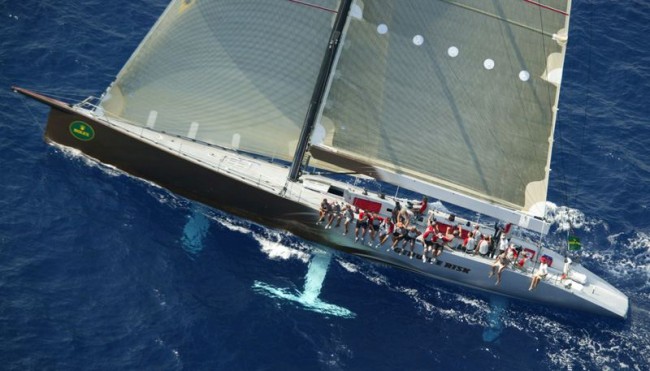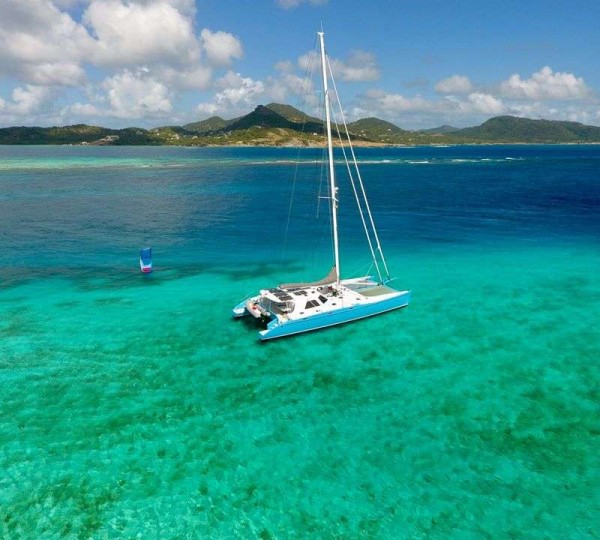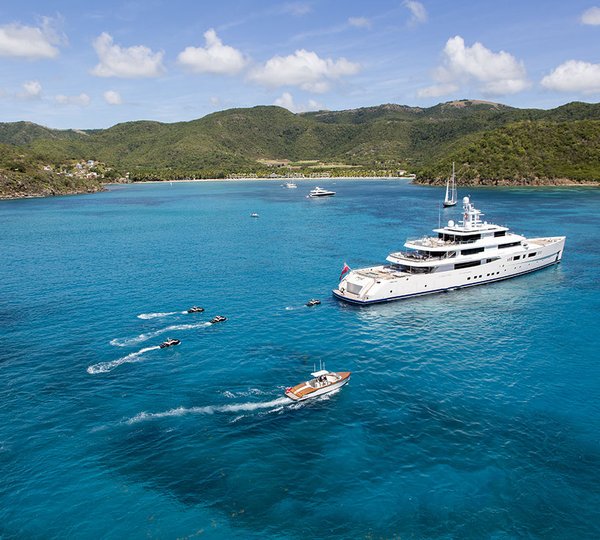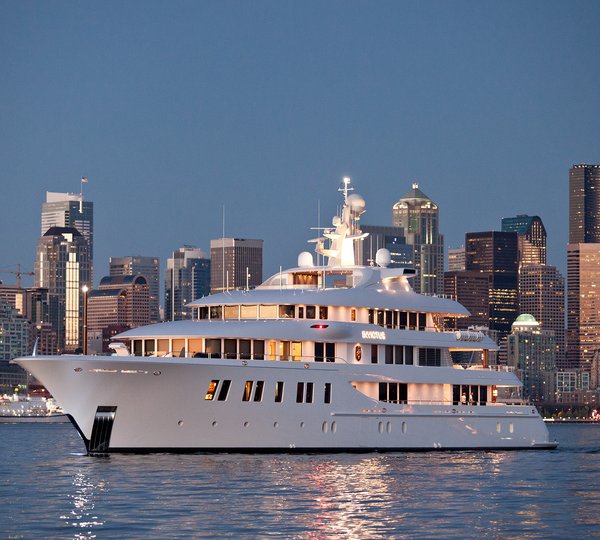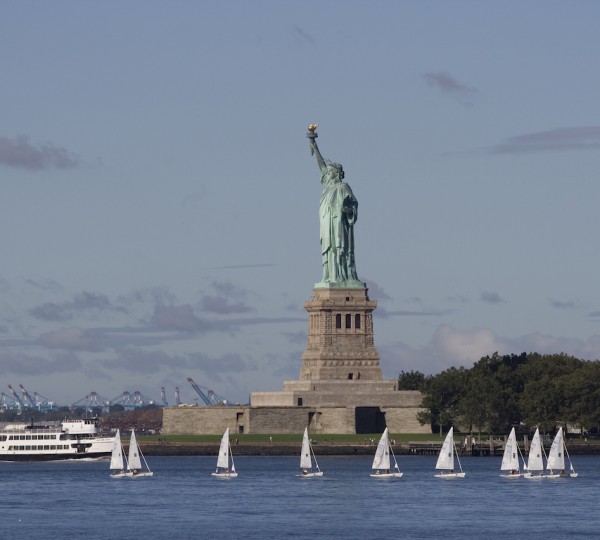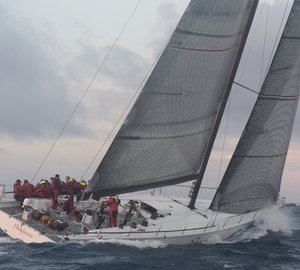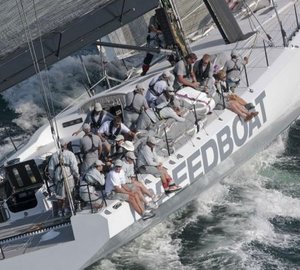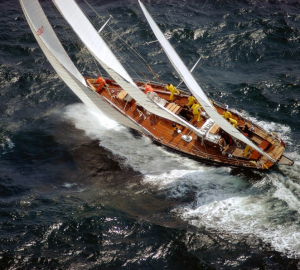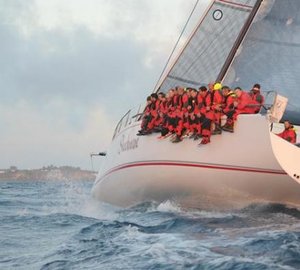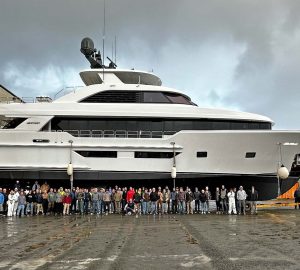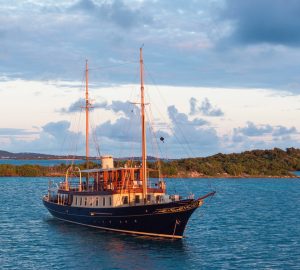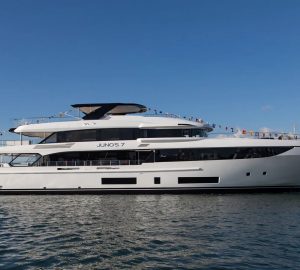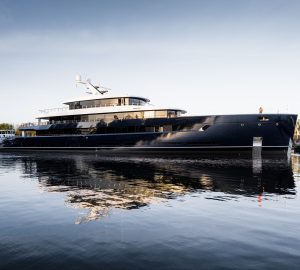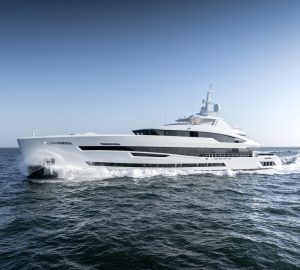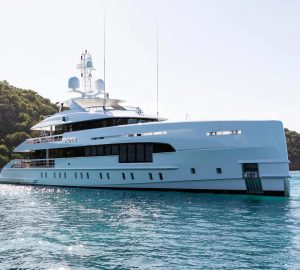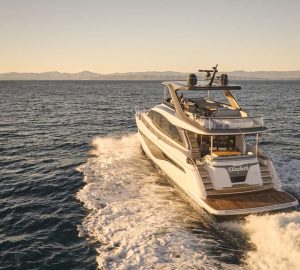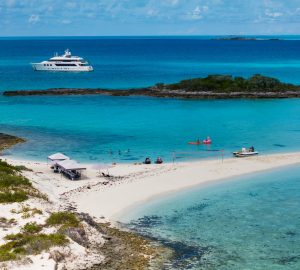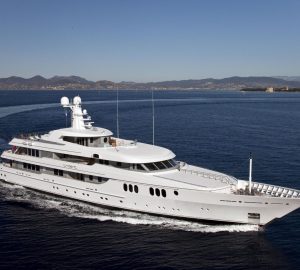A good wind is predicted for the early stages of the 47th Newport Bermuda Race, which starts today off Newport, R.I. The 184-boat international fleet is the third largest in the race’s 104-year history. Nearly 2,000 sailors will compete. The course runs 635 miles from the mouth of Narragansett Bay into the Atlantic Ocean and across the Gulf Stream to the finish line off St. David’s Head, Bermuda. The race should take two to three days for the largest boats, over 80 feet long, and four to six days for the smallest ones of 33 to 40 feet.
“We expect a fine afternoon sea breeze of 10 to 15 knots to get the boats out into the Atlantic,” said Bjorn Johnson, chairman of the Bermuda Race Organizing Committee. “It may get lighter as the boats sail out into the Atlantic, but there will be a strong favorable current in a Gulf Stream meander carrying the boats toward Bermuda.”
The thousands of spectators at the start will include Bermuda’s Governor, Sir Richard Gozney, and Premier, Dr. Ewart Brown. When the first starting gun is fired at 2 p.m. EDT, the two officials will be looking on from a motor yacht with Commodore Sheila McCurdy of the Cruising Club of America and Commodore Peter Shrubb of the Royal Bermuda Yacht Club, the race’s two sponsors.
The 184-boat fleet is divided into five divisions whose final standings will be determined by factoring handicaps into the boat’s elapsed times. The largest with 103 boats is the St. David’s Lighthouse Division for predominately amateur racing crews. If the two-time defending champion, Peter S. Rebovich’s Sinn Fein, wins her third straight St. David’s Lighthouse Trophy, she will tie a record set in 1954-60 by Carleton Mitchell’s Finisterre.
The Cruiser Division is the second largest with 39 boats. Its winner will receive a prize carrying Mitchell’s and Finisterre’s names. Professional racing crews compete in the Gibbs Hill Lighthouse Division (13 boats) for a trophy named for Bermuda’s tallest lighthouse. Three boats with cant keels and other innovations will race in the Open Division for the Royal Mail Trophy.
There also is the 26-entry Double-Handed Division for boats sailed by just two sailors. They sail for the Phillip S. Weld Prize and Moxie Prizes. In addition, the top boat in the IRC rule standings will receive the North Rock Beacon Trophy.
The five divisions are broken down into a total of 16 classes, determined by the boats’ size and type.
The race for first to finish will very likely be between the largest boats in the fleet, the 99-foot Speedboat in the Open Division and the 90-foot Rambler in the Gibbs Hill Division.
In a statement to the sailors, Commodores McCurdy and Shrubb said, “Hundreds of sailors and thousands of supporters make this race a major international sporting event every two years. Ocean racing is a marathon of endurance and finesse. Some experienced crews may make this year’s race look easy: Others will learn more than they thought they would. The challenges can be both stressful and satisfying.”
They added, “The fleet is first class, and the hospitality and facilities of the New York YC in Newport, and in Bermuda are unsurpassed. The members of our two clubs have volunteered countless hours of planning and preparation. Now we are all ready to let the fun begin!”
Newport Bermuda Race Skippers Meeting
It was a sight that can be found only in Newport. Sailors of every vintage – the tall, tanned, Fabio-looking crews of the carbon maxis, and the Topsider-wearing men and women with the requisite polo shirts – lined the street in front of the marquee at the Jane Pickens Theater for the Bermuda Race skippers meeting. Old friends were shaking hands, not having seen each other since the 2008 race. Wide-eyed newcomers were eagerly poking their heads inside the historic building in the heart of Washington Square.
“Welcome to the most exclusive meeting anywhere,” said Newport Bermuda Race chairman Bjorn Johnson as he opened the meeting in front of a standing-room only crowd, referring to the fact that each boat is only issued two tickets. He led a moment of silence for John Bonds, a well-respected Cruising Club of America member who passed away last week. A few hours earlier, Johnson and many competitors were at New York Yacht Club’s Harbour Court for a memorial service held for Bonds.
After Johnson’s introduction, CCA Commodore Sheila McCurdy congratulated the competitors on the “great achievement” of making it through the rigorous preparation process the organizers require of each boat. “It’s like a triathlon,” said McCurdy, who has sailed in the race 15 times and is sitting out this year to oversee the event with Commodore Peter Shrubb of the Royal Bermuda Yacht Club. “The preparation is the first leg. The race is the second. Getting the boat home safely is the third.”
Looking out over the crowd of sailors in the gradually warming air of the old theater, the sailors seemed ready to get on with the meeting, ready to learn what to expect from the weather and Gulf Stream experts. There was also the grumbling of stomachs, ready for that sumptuous crew dinner at Scales & Shells or some other eatery. But race committee chairman John Myles lightened things up by announcing that the new committee boat, the 126-foot ketch Axia, should be quite visible since the owner’s son will be having his 10-year-old birthday party onboard. Images of balloons flying across sails and marauding little children hitting those who start at the boat with a Super Soaker popped into my head.
Being one of the 30% sailing the race for the first time, my excitement at seeing all these sailors in one place was piqued by something I overheard on the street. Big boat, small boat, canting keel, full keel — at that moment we were all tied for one of the big trophies and all, hypothetically, with a chance for line honors (though the stars really have to align for a Ranger 37 to beat a Reichel/Pugh 75 to St. David’s Light house).
Having never sailed the race, I hear that the camaraderie founded in the days leading up to the start is usually galvanized in Hamilton by rum and sea stories.
I hope that’s true, since this has been a lot of fun . . . and the race hasn’t even started yet.

